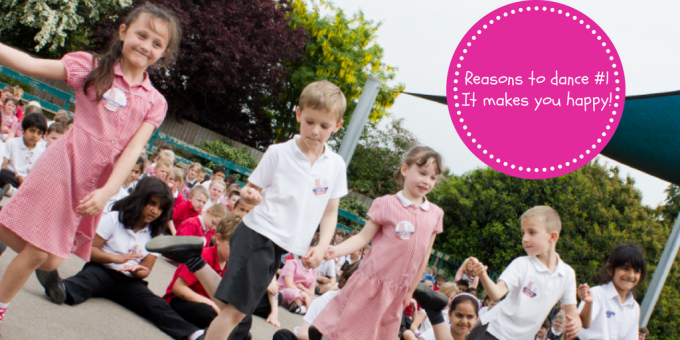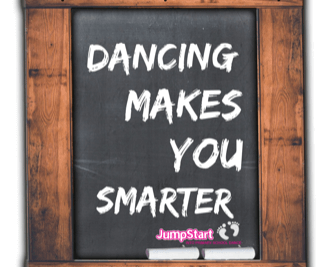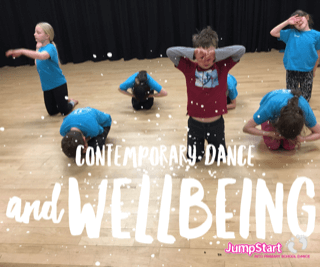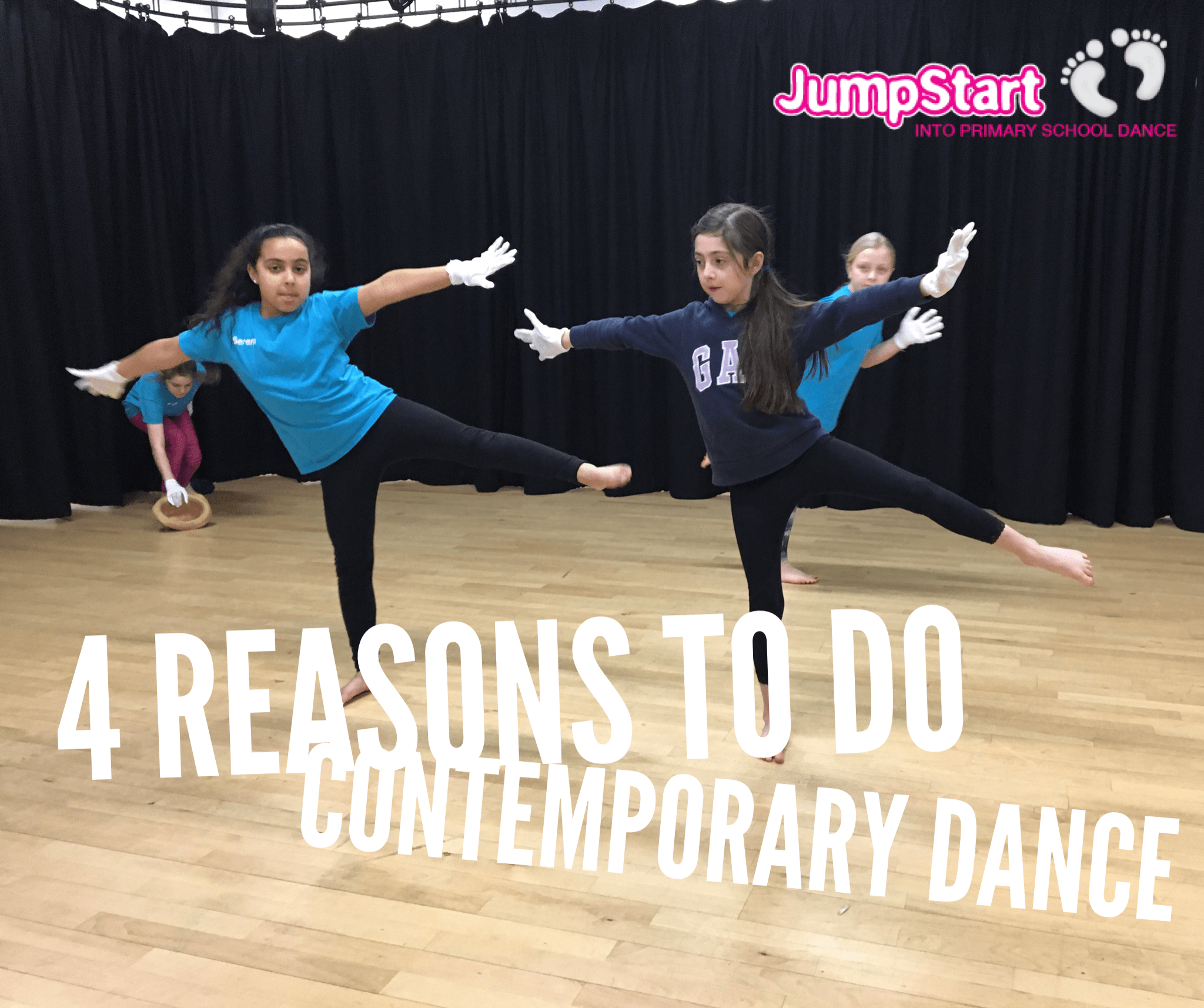Over the course of the last few weeks, we’ve been blogging about wellbeing and the…
Reasons to Dance: “Because I’m Happy…”
Today at 4pm Sir Ken Robinson will urge “devote equal time to dance and maths” in The Educators, a new series on BBC Radio 4. And (of course) I whole-heartedly agree!
There is a real buzz about dance at the moment and shows dedicated to finding dance talent dominate TV programming (Got to Dance, Sky’s dance programme started last weekend). And it seems that the general population have been inspired to have a go too. Certainly in Leicestershire (where I’m based), there are a multitude of dance schools, colleges, competitions and showcase events.
So what is it about dance that is so appealing? In this blog, and over the coming few weeks, I’ll be examining the reasons why people dance and why it’s such an important component of the Primary School curriculum.
I thought I’d start this series of blogs with the reason that I started dancing – which I have done ever since I can remember! As a child I was shy and often unconfident, particularly around large groups of people. Apparently when I started school, I barely spoke to anyone (much to my mother’s surprise – anyone who knows me will know I’m a talker!). However, I have always had a passion for the performing arts and often took a lead role in school plays. I think I was attracted to dance because I could express myself through movement in a way I couldn’t in other aspects of my life. I believe that dance helped me to become more confident in myself and gave me the opportunity to socialise with those that shared the same passion as me! And now I get to share my enthusiasm for dance with others – it’s definitely infectious!
In fact, recent studies into the science of dance have proven that “creative dance has the potential to elicit positive effects on self-esteem, motivation and attitudes towards dance” [1]. Movement makes you feel good and this in turn has a positive impact on your mental health and well-being. Michael Heppell (author of ‘Flip It’ – my new favourite book) puts in succinctly: “There’s some feel-good emotion in your motions” [2]. One teacher at a school I was working at last term commented: “I was watching ‘X’ today and saw him smile throughout the whole session – I hardly ever see him happy”. Dance touches the very soul of human nature and makes us feel good. And who doesn’t want happy, motivated and enthusiastic learners in their classroom?
In part, this ‘feel-good factor’ stems from the way that movement and music combine magically together. And I also feel that [appropriate] human touch has a large part to play. With the increasing popularity of social media and computer games, children are more likely to be holding handsets and small gadgets, rather than playing with each other through games of tag and leapfrog. And we do this to our detriment: “Staying in touch through the body is fundamental to a balanced existence, a balanced sense of self and balanced relationships with both the people, and the world, around us” [3]. Dance provides a safe forum for us to communicate with others through our bodies (such as with lifts, contact work, creative tasks) and enables us to learn to trust each other emotionally (as well as physically). Important for any child to learn.
Incorporating a gentle cool down at the end of a dance session helps children to relax and unwind. I was introduced to ‘The Wishing Star’ [4] at the NDTA 2013 Annual Conference; a book which is a great resource not only for cool downs, but also for quiet time in the classroom. The Wishing Star includes 52 meditations for children designed to relax their minds and bodies, as well as nurturing their creativity. Meditation helps to lower stress and anxiety levels and enhances our feelings of well-being.
Dance needs to be an integral part of the Primary School curriculum, so that children are given the opportunity to connect with themselves mentally and spiritually through movement. Do you agree? What are your children’s experiences with dance? Do you see them grinning with glee when their favourite track comes on, or perform with a new sense of confidence in their show? I’d love to hear about the positive effects of dance in your school.
Do you want the feel-good factor in your school? I specialise in bespoke dance packages for Primary Schools that are fun, accessible and engaging for boys (as well as girls). Email [email protected] for more information or to book.
[1] Quin, E. Fraser, L. & Redding, E. (2006) NRG Youth Dance and Health Project 2005-06 Evaluation Report, commissioned by the the Joint Investment Fund for the Arts in the SHIPS region. (http://www.trinitylaban.ac.uk/media/177132/nrg%20full%20report.pdf) Accessed 6th August 2014 [2] Heppell, M (2011) Flip It: How to get the best out of everything. Pearson Education Limited [3] Dymoke, K (2000) Touch: a natural language, from What Dancers do that other health workers don’t…, Jabadao Publication [4] Viegas, M (2004) The Wishing Star. O Books




